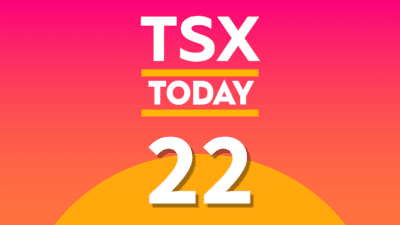One of the best ETFs to own if you’re making a bet on the internet is the First Trust Dow Jones Internet Index Fund. PayPal Holdings Inc. (NASDAQ:PYPL), the world leader in digital payments, is the fourth-largest holding at 4.84%.
Nowhere on the ETF’s list of 42 holdings is Vancouver-based TIO Networks Corp. (TSXV:TNC), an up-and-coming payments company trading on the TSX Venture Exchange.
Hey, I’m as cynical as the next person when it comes to anything associated with the venture exchange, but the more closely I look at its financials and business model, the more I feel like this is something that absolutely should be trading on Canada’s big board—heck, the NASDAQ even.
Successful small-cap investing is about finding little gems and holding them to maturity. Not everyone is going to make it to mid-cap or large-cap status, but some do; TIO Networks looks like it’s got a shot. Here’s why.
First off, it makes money.
In the first nine months of fiscal 2016 ended April 30, 2016, TIO Networks generated comprehensive income of $3.2 million on $49.6 million in revenue. In the same period in 2015 the company’s comprehensive income was $856,000 on $48.6 million in revenue. It’s the same revenue, yet comprehensive income increased 274% year over year.
How did that happen?
Well, to understand that one needs to first come to grips with its business model—i.e., how it makes money.
TIO Networks gets paid front-end and back-end transactional fees when utility, wireless, and cable customers use its multi-channel network (self-service kiosks, point-of-sale clerk-assisted retail locations, smartphone apps, etc.) to pay their monthly bills. Like ATM machines, it makes a little from a lot of transactions. Many of the people using its network to make payments are what are called the underbanked or unbanked. In the U.S. there are estimated to be 68 million people in this position, representing a US$9 billion market opportunity.
In April 2016 it closed on its $31 million acquisition of Softgate Systems, Inc., a New Jersey–based provider of consumer retail bill payment solutions. With the addition of Softgate, TIO Networks will have pro forma annual revenues of $105 million from the processing of more than 80 million consumer transactions, generating more than $10 million EBITDA. Best of all, Softgate brings with it US$30 million in net operating losses, which TIO Networks will use to lower its taxable income over the next 15 years.
Okay, now that we understand the business model, here’s why its revenue went sideways in the first nine months of 2016 versus 2015 and why its earnings went way up.
Cricket Wireless, one of its two biggest customers, was acquired by AT&T Inc. (NYSE:T), its other biggest customer. AT&T moved Cricket’s subscribers to its own billing system, which doesn’t have a $3 front-end, customer-funded convenience fee at its dealer stores. In its place, TIO Networks is paid a smaller back-end fee by AT&T.
Although revenues are less gross, profits stay the same, resulting in higher gross margins and a better bottom line. Not to mention the users of the network no longer have to pay the convenience fee, which is a big deal for many unbanked customers.
You see where I’m going with this?
The fees generated are recurring in nature—at least 95% of them, anyway—which means if it can figure out how to generate additional revenue streams from those same customers, such as money orders and cheque cashing, the average revenue per user will increase substantially … and so too will the profits.
TIO Networks has potential, but that doesn’t mean you should be dumping your entire RRSP into its stock. If you’ve got a “fun money” account, by all means, put it on your consideration list.
As Gretzky used to say, “You miss 100% of the shots you don’t take.” TIO Networks is worth a shot.







